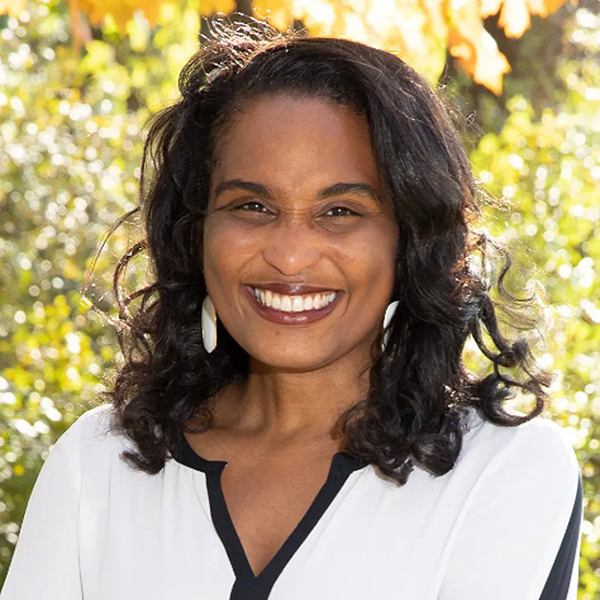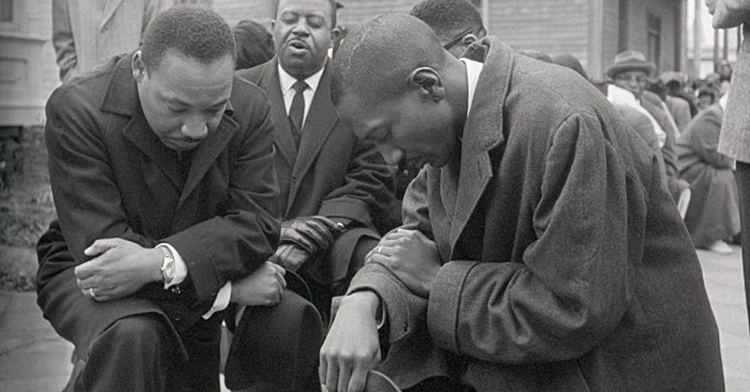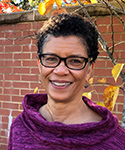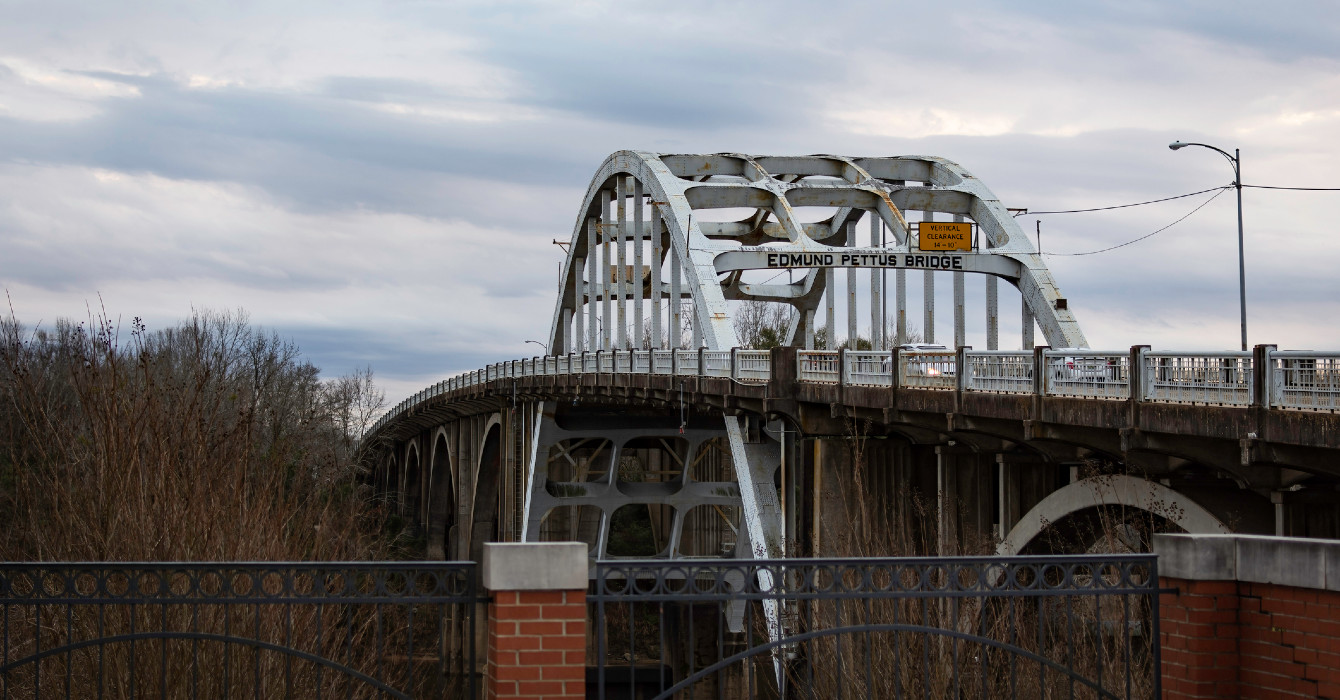There's no cross in the sanctuary of Broad Street Ministry, a Christian community in Philadelphia's arts district.
It's not an attempt to be interfaith, although the mission attracts people from across the religious spectrum. Nor does the church have a minimalist aesthetic; its sanctuary has glorious stained-glass windows and a flock of origami birds made of prayer cards hanging from the vaulted ceiling.
Instead, Broad Street's cross -- or temporary lack thereof -- symbolizes what the church is about: creating itself in the image of the community around it.
When Broad Street started four years ago, its leaders wanted a cross that reflected their community. But they didn't know who would be in their congregation, so they waited. Gradually, artists, students, ex-cons, homeless people, gay people, investment bankers all found their way through Broad Street's red doors.
They worship by the hundreds each Sunday night in a joyful, music-filled service, then break bread together at a family-style meal.
In creating Broad Street, Convening Minister Bill Golderer has created a process for building and revitalizing an urban church: understand deeply those for whom the church is to be good news. Then create a place which people leave delighted to have taken part, “even if they don’t love Jesus,” he said.
At Broad Street, that means providing shelter, food and access to services for the homeless and the impoverished; concerts and art shows for students and artists; one of the city's largest recognitions of World AIDS Day for gay neighbors; and opportunities for the wealthy and powerful to give back to those in need.
Above all, it means being welcoming and treating people with unconditional hospitality, no matter what their background.
A church of the future
Golderer, 39, seems an unlikely pastor. With floppy brown hair and quick flashes of smile, he wears jeans and a green velvet jacket to one Sunday night service (he’s headed to a Morrissey concert afterwards), then dons a pinstriped suit for an open-to-the-city dinner a few days later. Exuberant and energetic, he could be mistaken for a civic booster or political operative until he starts talking about the kingdom.
But the community he has built is a model for the outward-focused church of the future, said Jeanne Radak, associate executive for congregational ministry at the Presbytery of Philadelphia.
“At Broad Street, it’s not about doing the ministry, it’s about being the ministry,” she said. Going forward, “the church has to be about connecting people and catching that vision of what God’s calling us to do.”
That idea is at the heart of the theology that guides Golderer and his team of about 20 full-time and part-time pastors, seminarians and lay leaders.
As a Calvinist, Golderer believes that a covenant has been forged between God and God’s people, a covenant that is impossible for people to sever. God wants a relationship with us, even if we don’t want to hear it, he said.
Broad Street’s work likewise is driven by the idea of reconciliation between God and people, as well as between individuals and groups. That means bringing together people of different races, socioeconomic backgrounds, educational levels and sexual orientations to form one community.
The laboratory is the former Chambers-Wylie Memorial Presbyterian Church, a grand old Gothic building on Broad Street, Philadelphia’s Avenue of the Arts. The building was home to a powerful, socially prominent congregation until about 2000, when it closed following dramatic changes in the neighborhood.
The church sits across the street from the Kimmel Center for the Performing Arts, the city’s most prestigious venue, and next door to the University of the Arts. It is within view of the Union League, Philadelphia’s most exclusive social club and just blocks away from the cheapest hourly-rate hotel in the city, a predominantly gay neighborhood, a senior center and middle-class families and city dwellers. And, since opening its doors as a shelter in the winter, homeless people have become its neighbors, too.
“If you’re only interested in someone to the extent that they’re willing to join your church, that’s not really loving people,” Golderer said. “It doesn't go into the deep water of figuring out how to be a neighbor to them -- to live reconciled to them and to unearthing alongside them what God is trying to do with their life.”
So Broad Street doesn’t have members. There’s no way to join the church, but plenty of people -- Christian and otherwise -- belong to the community. Some people attend worship and rock shows. Others work in the homeless shelter, attend classical recitals and dine at the monthly dinner but want nothing to do with worship services. All are equal members in Broad Street’s community.
The goal is to open the doors and allow people to take part in whatever they choose, no strings attached.
The beginning
Golderer is an ordained Presbyterian minister and religious entrepreneur who served as the founding director of the Center for Church Life at Auburn Theological Seminary; helped found Seven Percent, a national network of Presbyterian clergy under age 40; and was the founding director of religious outreach for The Interfaith Alliance in Washington, D.C.
He was at a professional crossroads when a pastor at a traditional Philadelphia church made him an offer: What if people from healthy churches got together and helped him start a church from scratch in the Wylie-Chambers building, which the presbytery was considering selling?
Fresh from teaching at Union Theological Seminary in New York, Golderer couldn’t imagine pastoring a conventional church, where he thought he’d find few risk-takers and theological adventurers. At the same time, he wasn’t eager to take on a more prophetic church that likely would be less viable.
But the idea of starting a church in the diverse Broad Street community interested him. So he connected with five established congregations in Philadelphia and the suburbs to lease the building and begin the work.
Golderer hit the streets, getting to know the neighborhoods and the people who, if things went well, eventually would become part of Broad Street Ministry. Many were musicians who worked all Saturday night; others would be out until sunrise partying. To accommodate them and send the signal that Broad Street was something different, he decided to hold worship at 6 p.m.
Broad Street started holding monthly, then weekly, services and hosting concerts, lectures and Bible study. Soon it was providing shelter and food for homeless people and getting involved in issues such as domestic violence as well. Golderer challenged people to get involved, shed their anonymity, debate what they heard in the pulpit.
Passersby heard something interesting going on inside and wandered in. Many stayed.
Questions to consider
Questions to consider:
- What is the difference between belonging to a community and being a member of the church?
- Are members required to constitute a church? Is a cross essential for worship?
- How does reconciliation effectively drive the mission of this particular church? What are tangible ways a leader can help seek reconciliation with God and others?
- What kind of leadership is required from both denominations and churches for communities like Broad Street Ministry to break out of traditional mainline denominational categories while simultaneously being embraced by these denominations? What are the advantages and disadvantages for each organization?
‘Don’t worry about a darn thing’
One beneficiary of Broad Street’s unconditional love is Eric Markle, a construction worker who was semi-conscious and high on crack cocaine when he stumbled into Broad Street Ministry a year and a half ago.
“They said, ‘Come on in, don’t worry about a darn thing,’” he recalled. “They gave me tea, food and let me sleep.”
As he has grown away from that lifestyle, he has given back what he could. He’s now part of the unofficial security detail and one of the most gregarious members of the community.
“Even when I was battling [addiction], I helped out here because it kept me human,” Markle said. “It keeps you from falling completely off the edge.”
On a recent Sunday night, he observed, another newcomer had made her way to Broad Street. Homeless and lost, the attractive young woman “doesn’t know anyone, including herself,” he said. But for that evening, she sat at a table eating a warm meal, surrounded by other friendly young people.
Broad Street’s outreach and operations are funded through grants, partner churches, large major donors, the city of Philadelphia, partnerships with other organizations and an annual appeal that generates hundreds of $5 donations.
Community tensions
Despite Broad Street’s roots in Calvinism, its clergy’s Presbyterian training and the support of local churches, the local presbytery hasn’t always known what to make of it.
Leaders at first were flummoxed by their inability to fit the mission into one of the denomination’s traditional categories, said Radak, of the Presbytery of Philadelphia.
That, along with tensions between the leadership of both the church and the presbyetery, led to a difficult relationship for the church’s first two and a half years.
But Golderer and Radak reached out to work together. Instead of fitting the church into an existing category, they invented a new one. In January, the church was recognized as a “missional faith community.” (See related interview with Radak.)
“They’re being sent out into the neighborhood to build relationships with the people God has sent them to,” Radak said.
The broader Philadelphia community hasn’t always been so welcoming, either.
Early on, Golderer received frequent hate mail from conservative Christians calling the church’s leaders infidels and criticizing the ministry’s positive media attention. “There were some real humdingers,” he said.
Broad Street also invited opposition from neighbors when Golderer volunteered to open the church as a homeless shelter during the winter, said Angelo Sgro, executive director of the Bethesda Project, one of the city’s major organizations serving the homeless.
Golderer followed through on his promise to start a shelter and also recruited neighboring businesses such as Ruth’s Chris Steak House and Starbucks to donate to the project, Sgro said.
The wealthy and powerful have a responsibility to help others, Golderer said, and he challenges the affluent members of his congregation and Broad Street’s suburban partners to use their talents, skills and influence to do just that.
The process spreads
Golderer and others think the Broad Street approach can be applied at new and existing congregations alike.
“This is the lab, the R&D,” he said. The outcomes will be different at other churches, “but the process will be the same of discerning what we’re going to do, then doing it.”
Broad Street trains disciples to spread its methodology -- and staff its operations -- through a revolving group of ecumenical seminarian interns.
While many interns have come from nearby Princeton Theological Seminary, Golderer wants to draw from across the country and denominations for a new residential “Seminarian Immersion Program." With the help of partner churches, Broad Street has renovated a nearby house for the interns and is taking applications for the 2009-10 class.
One of the first Princeton interns, Emily Wilmarth, is applying what she learned at Broad Street as a pastoral resident at Central Presbyterian Church in Atlanta. Her experience in Philadelphia during the summer of 2007 awakened Wilmarth to what it means to be a church in the city, she said.
Wilmarth’s new church sits across the street from the Georgia state legislature, but its members have all kinds of concerns, interests and needs that aren’t being considered there, she said. In response, she’s building a ministry to help make her congregants’ voices heard in the seat of power.
And, as Broad Street reaches maturity, Golderer is starting to apply his process at Arch Street Presbyterian a few blocks away. That church shares a wall with the city’s tallest building, the Comcast Center, and is two blocks from Philadelphia’s Department of Human Services.
“We have the most vulnerable people and the most powerful, and the church is in between,” Golderer said. “We need to tie those two things together.”
He challenges his new congregation and all existing churches with a scenario: If Moses knocked on the door and said their church has to close, “Who will come to say, ‘You can’t close this church,’ who isn’t a member? Who will say the work of the church is too important, its gifts too real, too life-giving?”
There’s no mystery as to how those questions would be answered at Broad Street Ministry, said Sgro, of the Bethesda Project.
Broad Street’s communion line is one of the most diverse in the country, “if not the planet,” Sgro said, “and every one of those people would stand up and say ‘I need Broad Street Ministry.’ The community needs them.”
Finally, a cross
Broad Street’s congregation is now mature enough for its cross, one that recognizes its many sins, but also its capacity for great beauty, Golderer said.
“It reminds us to see sin for what it is, and also see redemption for what it is,” he said.
A year ago, Broad Street’s leadership team met with a metalworker to discuss their cross. The themes that arose were beauty and rawness, grit and honesty, willingness to share, excitement, suffering and hardship, hope and goodness. The ironworker then spent months at Broad Street, talking to people about what they thought their cross should be. 
Five community members recently reviewed the designs. The frontrunner: a 12-foot sculpture that would be suspended in the sanctuary. Fashioned out of stainless steel with translucent inserts, it’s full of twists and turns and irregularities.
It’s modern and unconventional, like Broad Street itself.
But beautiful.
(Image courtesy of Bob Phillips of Phillips Metal)






